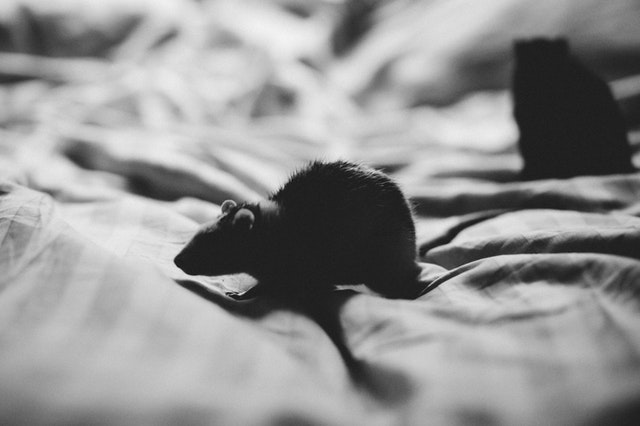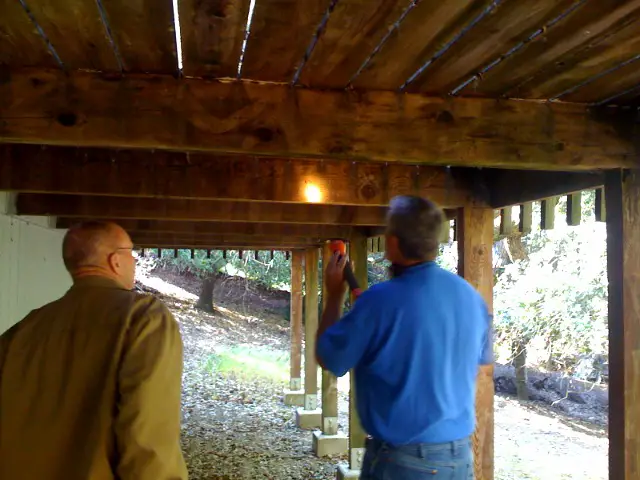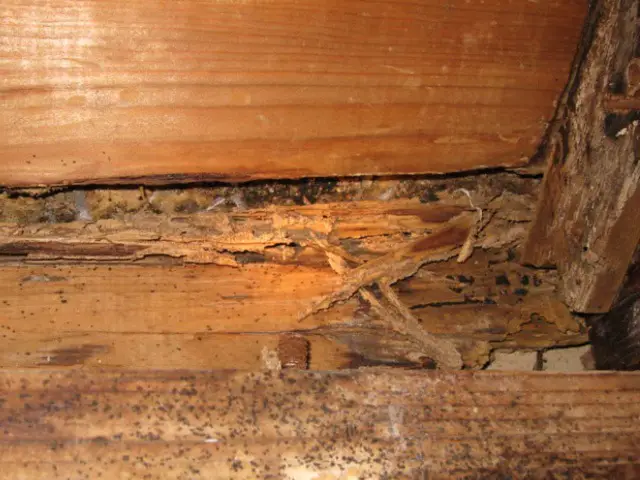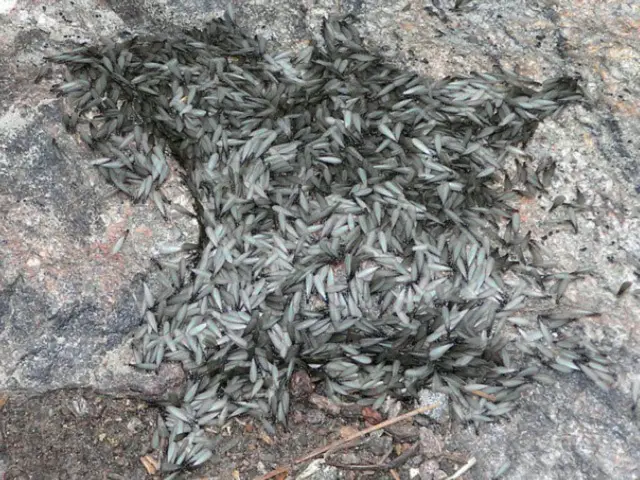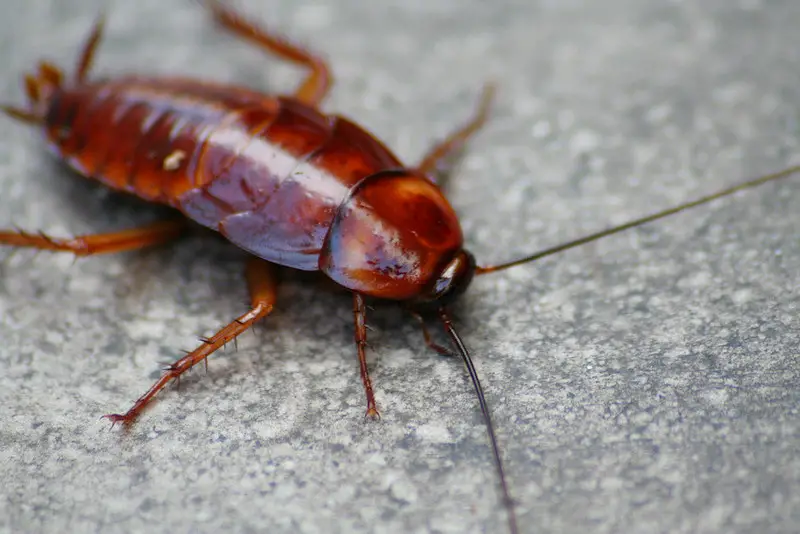True, some people keep mice and rats as pets. Rats are known for being smart, intelligent pets. Mice have a reputation for being curious, and they could even be considered cute. But the difference between a well taken care of pet rodent and a wild, uninvited pest in your home is huge.
Are rats and mice dangerous?
The dangers of rats and mice in your home cannot be overstated! Rodents can swiftly breach weaknesses in your home’s exterior without you being any the wiser. First, they’ll sniff out a cozy, isolated spot to nest near a food source. And from there, they’ll make your home their home. Then, in a month’s time, you’ll have an infestation on your hands.
Just a few of their favorite habits include: gnawing on electrical wiring, raiding pantries and cabinets, burrowing in attic insulation, and shredding storage boxes. Yikes! That’s not just gross; it’s downright dangerous. If you have heard scuttling or scratching noises in the attic, basement, or walls and have been ignoring it- don’t. You’re putting your family’s health at risk! You need to call in professionals ASAP to remove the rodents.
Related posts:
- Rat Infestation Treatment
- Do Mice Eat Cockroaches?
- Will Cheese Attract Mice?
- Are Potato Bugs Dangerous?
Read on to learn about the shocking dangers of having rats and mice in your home.
Health Hazards of Rodents
Do rats and mice give you the creeps? Is the thought of rats and mice racing around in your home unseen keeping you up at the wee hours of the night? Rodents make most of us feel keenly grossed out. Honestly, it’s for a good reason. Wild rodents carry many harmful diseases, 35 according to the Centers for Disease Control and Prevention. So having rats and mice in your home is more than a nuisance; it’s potentially very hazardous to your health.
What diseases do rats and mice carry?
The habits that rats and mice practice on an everyday basis make them the perfect vehicle for anything from parasites to zoonotic diseases that can be severely damaging to humans. These health risks are mostly presented through food contamination and rodent feces. Possible infectious diseases caused by rats, mice and other rodents include Weil’s Disease, leptospirosis, Hantavirus Pulmonary Syndrome, Murine Typhus, Lymphocytic Choriomeningitis, rabies, salmonella, Trichinellosis, rickettsialpox, and Tularemia.
Hantavirus is one to be especially wary of if you have rats in the attic. Rats excrete the virus in their urine, saliva, and droppings. Breathing contaminated dust after disturbing or cleaning rodent droppings or nests can cause a person to contract Hantavirus, which is a very serious pulmonary disease and can be deadly.
Salmonella is another common issue with rodent-infested households. The bacteria, which can cause disease in humans and animals, is transmitted to humans by eating foods contaminated with rat and mice feces.
Rodents in America that carry Hantavirus:
- Deer Mouse
- White-Footed Mouse
- Cotton Rat
- Rice Rat
Do all rodents carry Hantavirus?
Hantavirus pulmonary syndrome, or HPS, is a fatal disease contracted from rodents. Humans can contract the disease after contact with infected rodents or their droppings and urine. Despite the rare cases involved with HPS, it is a deadly disease.
Related post: Why Mice Come Into Your House in the Summer?
Hantavirus Carriers
Deer mice, cotton rats, rice rats, roof rats, pack rats and the white-footed mouse are all carriers of Hantaviruses. The deer mouse, which ranges in color from reddish-brown to gray, is deceivingly furry and cute. These mice live pretty much everywhere in North America, particularly in desert regions and woodlands. The cotton rat lives in the southeastern area of the U.S. and is larger than the deer mouse, with coarser fur and a grayish-brown color.
Rice rats have long tails, short grayish-brown fur and live in marshy areas. The white-footed mouse is smaller and found along the Atlantic seaboard. Packrats, which get their name from a propensity to collect bright and shiny objects, are also fuzzier than other rodents.
Woodrats, on the other hand, have scalier tails and tend to infest homes in the southwestern regions. Although other rodents may carry strains of Hantavirus, they have yet to be identified.
Transmitting Hantavirus
Rodents release the virus in their droppings, urine and saliva. Humans often get the disease when they breathe contaminated air through the process of “aerosolization.” It’s easier to contract the virus in mustier places with lots of dust, such as in an old storage room or shed.
Hantavirus also spreads through the rodent, directly biting a human if a human makes contact with contaminated urine or droppings or if they eat food that has been contaminated by an infected rat. HPS in the U.S. cannot be transmitted from one person to another. If you touch or kiss someone with HPS, you cannot become infected. You also cannot get HPS from a blood transfusion.
Moreover, Hantavirus in the U.S. does not transmit through other animals. Hence, you cannot get the disease from insects that live with rodents.
Protecting Yourself From Hantavirus
In order to prevent the spread of the disease, rodent proofing and rodent control in and around the home is crucial. Avoid close contact with all rodents. Disinfecting areas infested by rodents will help prevent transmitting the virus. If you find that there’s an infestation in your home, call a rodent control agency right away and disinfect anywhere you think may have been contaminated.
Do rats and mice cause the plague?
When rats, mice and other rodents die, hungry fleas seek other sources of blood. These new blood sources can be people, other animals and pets. Therefore, getting bitten by fleas from dead rodents can increase the risk of contracting the plague. According to the CDC Plague Home page, most human cases in the United States occur in two regions:
- Northern New Mexico, Northern Arizona, and Southern Colorado; and
- California, Southern Oregon, and far western Nevada
While cases are still rare, it is obvious that the danger of plague is lurking in our region as fleas carry the disease to existing animal populations. Symptoms of pneumonic plague include blood in the saliva, high fever, chills, nausea, chest pain, cough, and headache. Symptoms are often accompanied by an enlarged, painful lymph node in the armpit or groin. If treated early with antibiotics, the chances of survival are very high.
Particularly if you live in northern Arizona, you must take precautions when you contact any animal, whether dead or alive, wild or domestic.
Here are some ways to minimize your risk of exposure:
- Put flea collars on all pets and spray or dust regularly.
- Do not allow cats outdoors and keep dogs from wandering.
- If a pet cat becomes ill, have it checked by a veterinarian as soon as possible.
- Do not touch wild, sick or dead animals. If you must touch them in order to help or remove them, do not do so without taking steps to protect yourself, such as wearing gloves.
- Avoid rodent nests and have them removed by professionals trained to do so.
- Report rodent deaths (such as rats and prairie dogs) to local authorities for investigation so that plague can be identified and contained quickly.
- Cook game meat until juices run clear or to 180 degrees or higher.
- If you begin to have symptoms such as those listed, see medical assistance immediately.
Rodents and Allergies
Mice and rats can play a major role in triggering dangerous allergies. According to a study done by the State of Florida Pest Control Unit, a national study detected mouse urine levels that could trigger allergies in 35% of homes. Trace amounts or higher were found in 82% of homes.
Mouse droppings are also an allergy issue. There are as many people allergic to mouse droppings as there are to mold and dust. Exposure to mouse allergen is a known cause of asthma in children and adults.
These health risks are very real and require every precaution. You, the homeowner, should never try to clean up or remove rodent feces yourself! There is a procedure for safely removing animal feces, which involves professionals wearing proper protective gear and using trained techniques to sanitize and treat the affected area. Contact your local pest control specialist to make your home a safe space once again by removing rats and mice and any signs of their excrement safely.
Home Safety Hazards
When you cozy up inside and prepare for a cold winter, your home becomes a beacon for mice and rats. Dropping temperatures cause them to search for refuge in warm places. In fact, the National Pest Management Association (NPMA) reports that rodents enter an estimated 21 million homes in the U.S. each winter.
Have you never seen a mouse or rat in your home? That doesn’t mean they’re not there. A mouse can enter your home through an opening as small as ¼-inch. Rats and mice are very skilled at sneaking around, unnoticed in the night. They can live in your home for a long time undetected, all the while nesting and reproducing. Unfortunately, many times it takes visible property damage or foul odors to alert homeowners to the presence of rodents in their homes.
Here are some of the most common dangers rats and mice pose to the integrity of your home:
Insulation
Rats and mice can damage attic insulation or woodwork by burrowing into the structure. This is one of their preferred nesting areas. The insulation is shredded and then further rendered ineffective by contamination from rodent feces and urine. Any contact with contaminated insulation could result in the transfer of disease- do not attempt to clean or remove it yourself.
Attic insulation is a key component in keeping your home warm and comfortable. If your insulation is not functioning properly, you are definitely wasting energy and will notice a spike in your electric bill!
Contact a local pest control company for high-quality attic insulation services that meet all your needs- consultation, decontamination, rodent removal, or insulation replacement.
Wiring
Unless you’re an electrician, it’s tough to fathom the amount of wiring that is networked behind the walls of your home- out sight, out of mind. But’s it’s there, keeping the lights on and all your appliances running.
Rats can chew through just about anything, which can be extremely hazardous, especially when it comes to electrical wiring. When rats gnaw through these cables, there is always the risk of combustion.
Home fires often get started due to an electrical or wiring problem. The good news is you don’t have to be a victim. This danger is preventable!
During home inspection for rats and mice, professionals will thoroughly check your kitchen and other hot spots for any signs of gnawing or tampering. You can get peace of mind knowing that all your wiring is intact!
Food Storage
Lock up your pantry! Rats and mice love all grain foods. So they’ll easily gnaw through cardboard cereal boxes, plastic zip lock bags with speed to get to their prize.
They excel at climbing, and it’s a myth that rodents cannot climb vertically. Wipe down your kitchen counters and keep things tidy. You don’t want to make your space look inviting to rats and mice. Place all foods in the pantry or lower cabinets in glass Tupperware or thick storage containers.
Consuming foods that have been tampered with by rats and mice is highly dangerous. Protect your kitchen.
Here is how to rodent-proof your home:
- Seal holes and cracks – even small ones – on the outside of your house to help prevent rodents from easy access. Pay close attention to areas where pipes and utilities enter the house. Replace or repair loose mortar and weather stripping around the windows and basement foundation.
- Don’t build structures that would attract rodents to your home. It’s best to store firewood 20 feet or farther from the house and at least five inches off the ground.
- Cut back shrubberies to make sure they are far enough so rodents can’t use them to gain easy access to the home.
- Rodents love clutter, so store boxes off the floor and keep areas clear—store food items in rodent-proof containers.
Contact a licensed pest control professional to inspect and treat the pest problem if you find rodent feces, hear the sounds of scurrying in the walls, or observe other signs of an infestation.
Rats and mice are smart, but you are smarter. So get the pest control experts on your side and neutralize any dangers or threats rodents might pose to the safety and security of your home.
Deer Mouse – Scientific Name: Peromyscus Maniculatus
Description of Deer Mouse: These mice have white feet, usually white undersides, and brown or black fur. Their bicolored tails are relatively long and can be as long as the head and body.
In comparison to house mice, deer mice have larger eyes and ears. Most people consider a Deer Mouse to be more “attractive” than a House Mouse. The Deer Mouse does not have the characteristic mousy odor of the House Mouse. All species of Peromyscus cause comparable problems and require similar solutions.
Deer Mouse Range and Reproduction: The deer mouse is the most widely distributed and abundant mammal in North America. The Deer Mouse occupies nearly every type of habitat within its range, from forests to grasslands. Deer mice are mostly nocturnal with a home range of 1/3 acre to 4 acres with a wild population density of about 15 mice per acre.
In warm regions like Arizona, reproduction may occur more or less year-round in Deer Mice. Litter size varies from one to eight young but is usually three to five. Females may have from two to four or more litters per year, depending on climate. Mated pairs generally stay together during the breeding season but may take new mates in the spring if both survive the winter. If one mate dies, a new mouse is acquired. Family groups normally nest together through the winter. They do not hibernate but may become sluggish for a few days when winter weather is severe.
Health Information on Deer Mouse: The principal problem caused by deer mice is their tendency to enter homes, cabins and other structures that are not rodent-proofed. These places store food, build nests, and cause considerable damage to upholstered furniture, paper, mattresses, clothing, or other materials that they find suitable for their nest-building activities. Nests, droppings, and other signs left by these mice are similar to those of house mice. However, deer mice have a greater tendency to cache food supplies, such as acorns, seeds or nuts, than do house mice. As a result, deer mice are uncommon in urban or suburban residential areas unless there is considerable open space, such as fields and parks nearby.
Deer mice occasionally dig up and consume newly planted seeds in gardens, flowerbeds and field borders. Their excellent sense of smell makes them highly efficient at locating and digging up buried seeds. In mid-1993, the deer mouse was first implicated as a potential reservoir of a type of hantavirus responsible for an adult respiratory distress syndrome, leading to several deaths in the Four Corners area of the United States. Subsequent isolations of the virus thought responsible for this illness have been made from several Western states. The source of the disease is thought to be through human contact with urine, feces or saliva from infected rodents.
Important Facts on the Deer Mouse:
- Deer mice can chew through wiring, posing a significant fire threat and is a general nuisance.
- Deer mice can enter penetrations and vents in the home but may also build nests in residential yards near sheltered areas.
- Nests consist of stems, twigs, leaves, roots of grasses and other fibrous materials. They may be lined with fur, feathers or shredded cloth. The deer mouse often builds its nest underground in cavities beneath the roots of trees or shrubs, beneath a log or board, or in a burrow made by another rodent. Sometimes deer mice nest in aboveground sites such as a hollow log or fence post or in cupboards and furniture of unoccupied buildings.
- Deer mice are primarily seed eaters. Frequently they will feed on seeds, nuts, acorns and other similar items that are available. They also consume fruits, insects and insect larvae, fungi and possibly some green vegetation. They often store quantities of food near their nest sites, particularly in the fall when seeds, nuts, or acorns are abundant.
